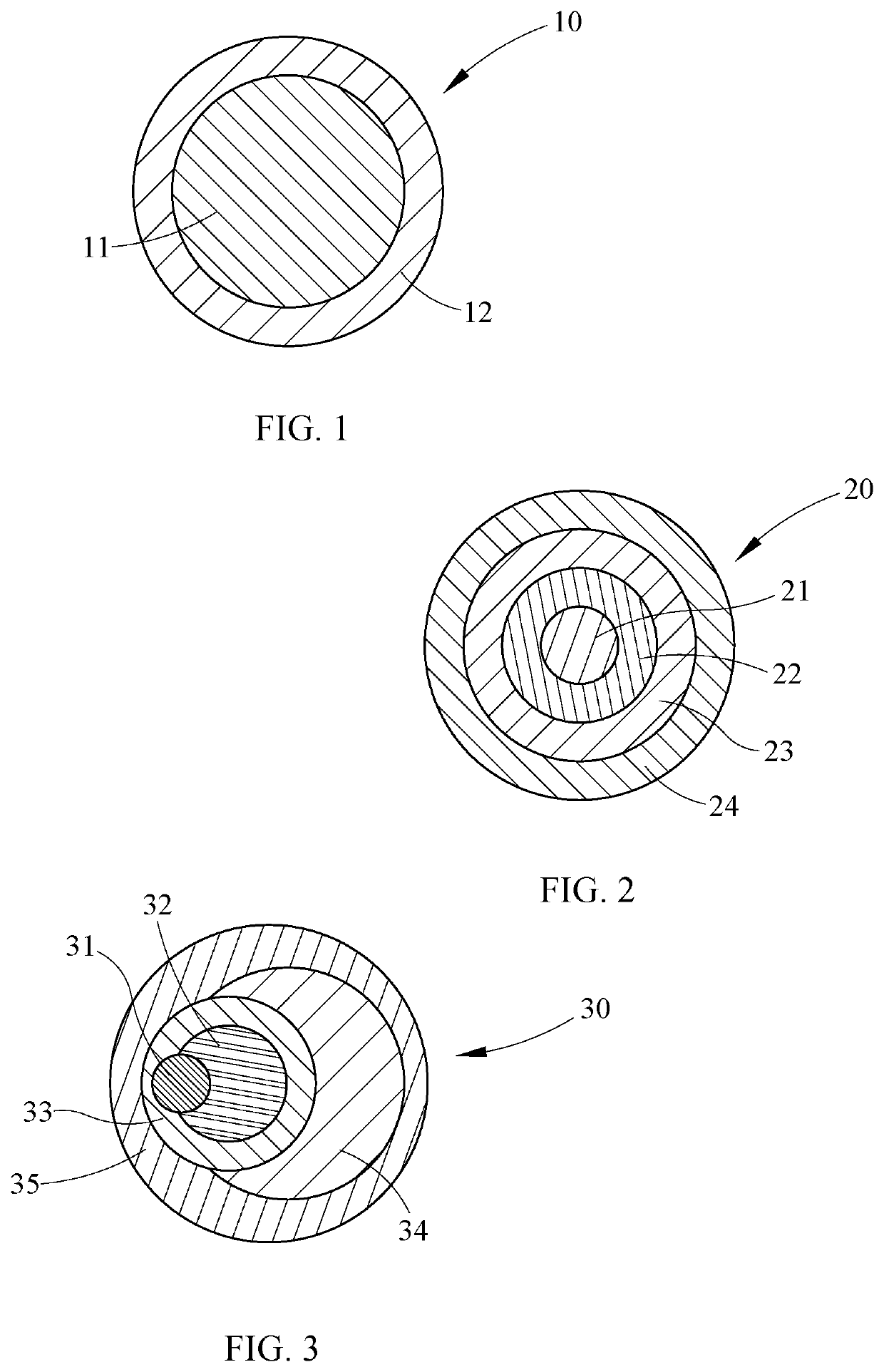Encapsulated reactant and process
a technology of reactant and encapsulation, applied in the field of reactant (s), can solve the problems of affecting the quality of reactant, and affecting the quality of reactant, and achieve the effect of convenient handling
- Summary
- Abstract
- Description
- Claims
- Application Information
AI Technical Summary
Benefits of technology
Problems solved by technology
Method used
Image
Examples
example 1
[0050]Potassium permanganate (KMnO4) was milled in a media mill. The feed stock of KMnO4 had a first particle size of about 100-200 μm. The media mill was manufactured by Custom Milling & Consulting, Inc and had a milling shaft with a plurality of discs extending radially therefrom. The tip speed of the discs during milling was between about 1800 and 2500 fpm. The milling shaft extended into a cylindrical screen which was enclosed in a jacketed milling chamber. Cerium stabilized zirconium oxide milling media having about a 0.8 mm diameter was placed within the screen. The screen had slot openings smaller than the diameter of the milling media so as to retain the media therein. A discharge from the mixing chamber fed into a jacketed holding vessel. Material was accumulated in the holding vessel and was recirculated back through the mixing chamber. The particle size of the milled particles was then measured with a laser scattering analyzer in accordance with ASTM B822.
[0051]The millin...
example 2
[0052]The milling chamber and holding vessel of Example 1 were heated to a temperature of about 125° F. A coating material of paraffin wax was fed into the media mill of Example 1. KMnO4 of the first particle size of about 100-200 μm was fed into the milling chamber. The paraffin wax and KMnO4 were added to the milling chamber at weight a ratio of about 3:1. The milling shaft was rotated within the screen milling the KMnO4 for about 3 hours. An amount of KMnO4 and paraffin wax was continually discharged from the milling chamber into the holding vessel where it was recirculated back into the milling chamber. A sample of the milled KMnO4 was collected after 3 hours of milling at the point of discharge into the holding vessel and analyzed for particle size. The particle size of the oxidant particles are shown in Table 1.
example 3
[0053]Coating materials of mineral oil and paraffin wax were fed into a batch mill where the coating materials comprise 95% mineral oil and 5% paraffin. KMnO4 of the first particle size of about 100-200 μm was fed into the basket in the mill. The coating materials and KMnO4 were added to the milling vessel at weight a ratio of about 4:1. The KMnO4 was milled for about 3.5 hours. A sample of the milled KMnO4 was collected after 1, 1.5, 2, 3, and 3.5 hours of milling and analyzed for particle size. The particle size of the oxidant particles are shown in Table 1.
TABLE 1Hours Mean oxidant Coating materialmilledparticle size (μm)Hydrogenated soy bean wax12.5Hydrogenated soy bean wax21.8Hydrogenated soy bean wax31.4Hydrogenated soy bean wax41.5Paraffin31.695% mineral oil, 5% molten15.6paraffin95% mineral oil, 5% molten1.54.3paraffin95% mineral oil, 5% molten24.5paraffin95% mineral oil, 5% molten33.6paraffin95% mineral oil, 5% molten3.51.6paraffin
[0054]The data of Examples 1, 2, and 3 in T...
PUM
| Property | Measurement | Unit |
|---|---|---|
| outer dimension | aaaaa | aaaaa |
| outer dimension | aaaaa | aaaaa |
| pressures | aaaaa | aaaaa |
Abstract
Description
Claims
Application Information
 Login to View More
Login to View More - Generate Ideas
- Intellectual Property
- Life Sciences
- Materials
- Tech Scout
- Unparalleled Data Quality
- Higher Quality Content
- 60% Fewer Hallucinations
Browse by: Latest US Patents, China's latest patents, Technical Efficacy Thesaurus, Application Domain, Technology Topic, Popular Technical Reports.
© 2025 PatSnap. All rights reserved.Legal|Privacy policy|Modern Slavery Act Transparency Statement|Sitemap|About US| Contact US: help@patsnap.com

